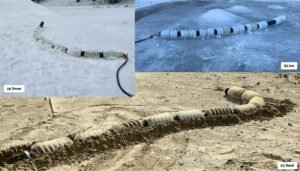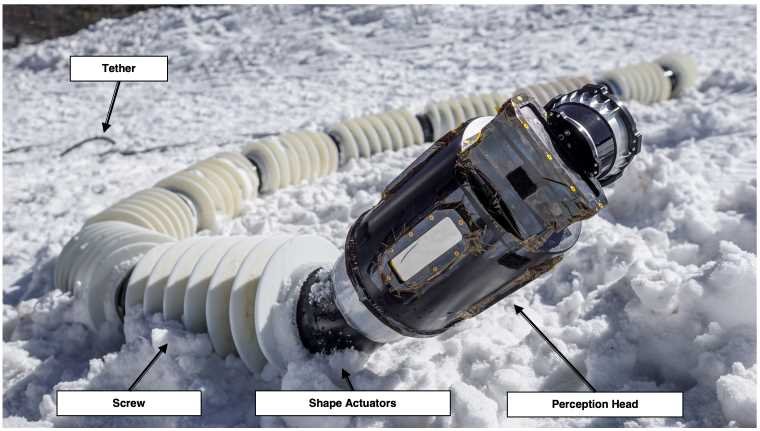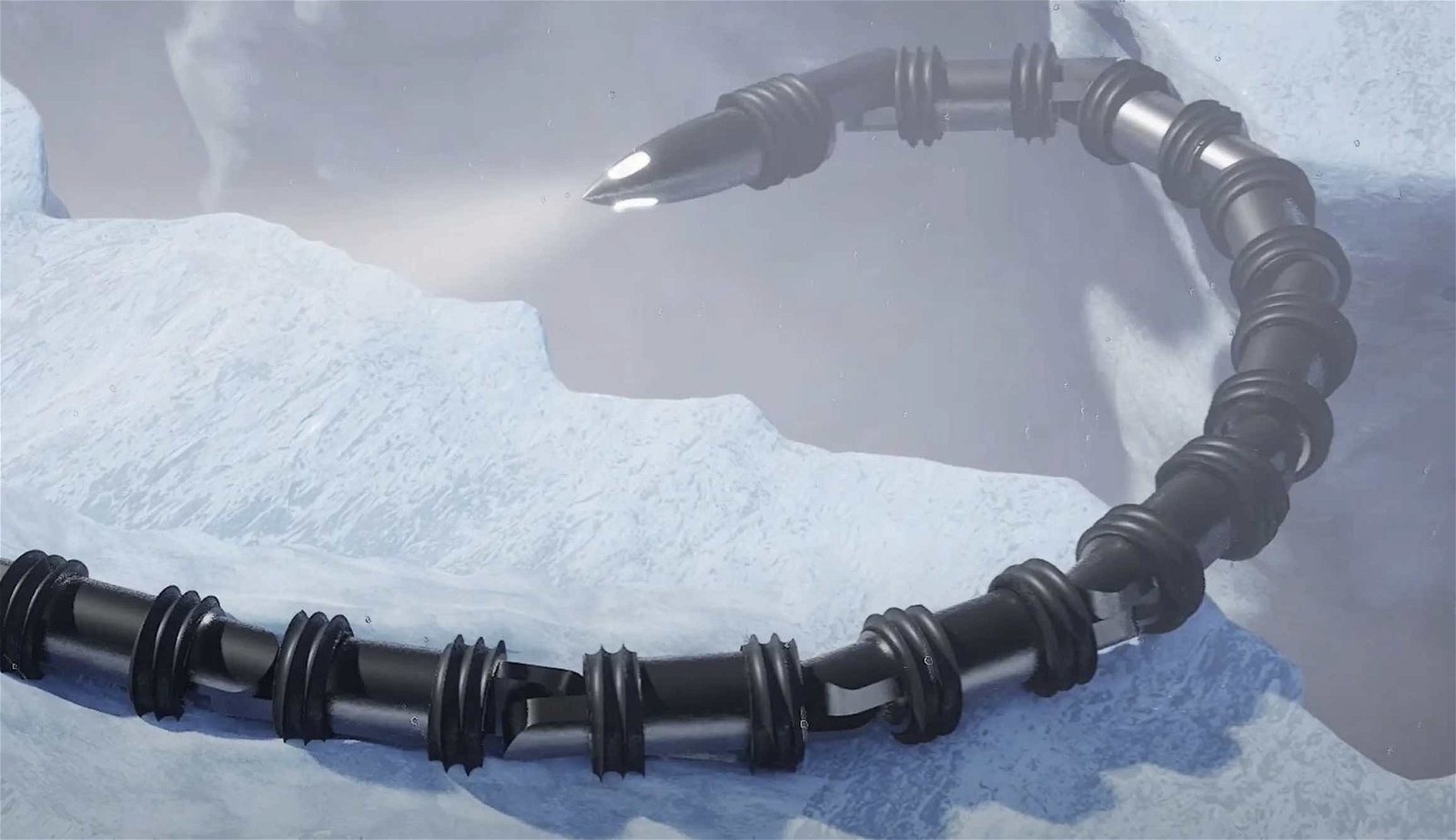Scientists at NASA’s Jet Propulsion Laboratory have revealed a next-generation snake-like robot that could one day crawl through the icy surface of Saturn’s moon Enceladus to search its subsurface ocean for signs of extraterrestrial life.
Dubbed the Exobiology Extant Life Surveyor (EELS), the robot is uniquely designed to enter through the thermal vents on the surface of Enceladus and crawl down into the ocean below in the search for life beyond Earth.
Enceladus is a Tantalizing Target for Astrobiologists
Nearly twenty years ago, NASA’s Cassini mission launched toward Saturn. During its decade-plus stay, the probe studied the massive gas giant and its moons before finishing its duties and smashing into the planet’s surface.
Among Cassini’s most tantalizing discoveries was the presence of huge plumes of water that the moon was ejecting into space. Researchers had previously suggested that a huge ocean of seawater existed beneath the icy moon’s surface, but these gigantic plumes seemed to finally confirm this.
Almost immediately, astronomers and enthusiasts alike began to bandy about concept missions that would return to Enceladus to see if this subsurface ocean was home to any extraterrestrial lifeforms. Among the most promising involves flying a probe through the plumes and capturing samples of the ejecta to return to Earth for study. Unfortunately, no mission of this type is currently on NASA’s schedule.
Another promising concept involved sending robotic probes to Enceladus to search the ocean directly. While much more likely to garner dispositive results than a flyby mission, numerous challenges, including drilling through the ice to get to the ocean, have made such a mission impractical, at least for the time being.
Now, a team from NASA’s Jet Propulsion Laboratory has developed a unique snake-like robot that is technically feasible and potentially capable of gathering much of the same valuable data as those other proposed missions. They call it EELS.
Snake-Like EELS Robot Could Study Vents, Plumes, and Ocean for Signs of Life
In the journal Science Robotics, JPL scientists write that “an existing study shows that sending small robots into the vents and directly sampling the ocean water is likely possible.” This promising avenue of study led JPL scientists to design and construct a snake-like robot that could enter and traverse these vents instead of having to drill through the ice.


“EELS leverages the existence of an open pathway to Enceladus’ subglacial ocean and sidesteps the problems of thermal ice drilling in cryogenic ice by using ice as terrain over which to move rather than a medium through which to move,” JPL scientist Tiago Vaquero and colleagues explain.
The robot itself is four meters long and has what the team describes as a “perception head” filled with cameras and sensors and a snake-like body of ten individual segments. EELS is also designed to operate autonomously, removing concerns about communication with mission operators as it plunges deep into the moon’s icy surface.
Once the prototype was completed, the EELS team tested it out on the icy surface of Athabasca Glacier in Alberta, Canada, where they say it moved “with dexterity.” The team also tested their snake-like robot out on a sandy Mars-like setting, where they say it performed “similarly well.”


No Timeline for an EELS Life-Hunting Mission
There is currently no definitive timeline for a mission that would send EELS to Enceladus. However, the team behind EELS believes they have constructed the exact type of robot such a mission would require. They also note that scientists searching for signs of life are enthusiastic about the potential of finding life deep inside Saturn’s icy moon.
“Ice worlds are at the forefront of astrobiological interest because of the evidence of subsurface oceans,” the JPL scientists write. “EELS…can navigate Enceladus’ extreme surface and descend an erupting vent to capture unaltered liquid samples and potentially reach the ocean.”
Christopher Plain is a Science Fiction and Fantasy novelist and Head Science Writer at The Debrief. Follow and connect with him on X, learn about his books at plainfiction.com, or email him directly at christopher@thedebrief.org.

